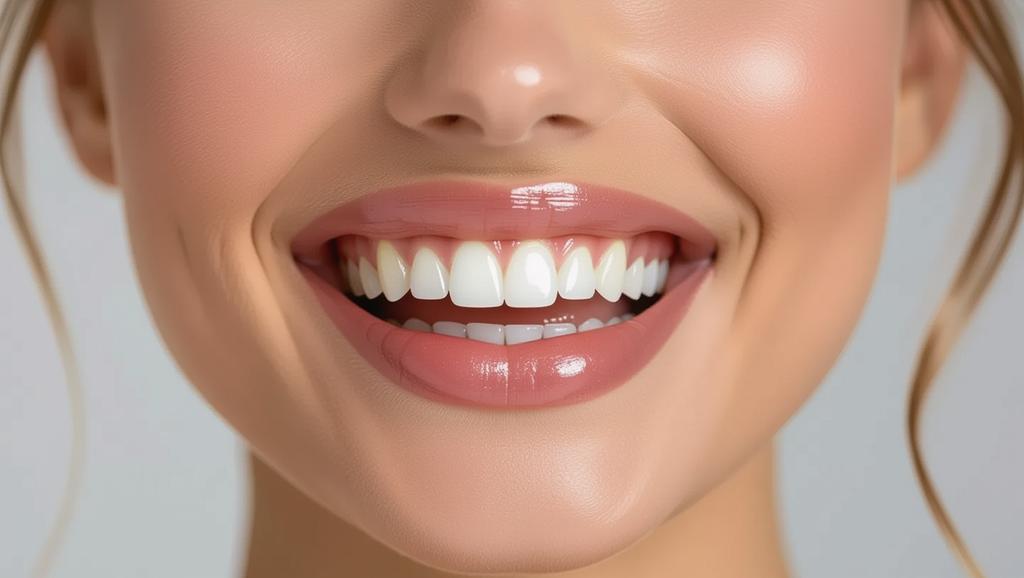What is Oil Pulling and How Does It Work?
Oil pulling is an ancient Ayurvedic practice that has gained popularity in recent years for its potential health benefits, particularly in dental care. The process involves swishing a tablespoon of oil, such as coconut, sesame, or olive oil, around in your mouth for about 15 to 20 minutes. This method is believed to draw out toxins, bacteria, and plaque from the mouth, leading to improved oral health and whiter teeth. The oil acts like a magnet, pulling harmful substances away from the teeth and gums, which can be particularly beneficial for those looking to naturally whiten their teeth without harsh chemicals.
The science behind oil pulling suggests that the oil’s fatty acids can bind to the lipid layers of bacteria and toxins, effectively removing them from the oral cavity. This can lead to a reduction in plaque buildup, gingivitis, and even bad breath. Many people who have incorporated oil pulling into their daily routine report seeing noticeable improvements in the whiteness of their teeth over time. For someone like me who drinks coffee and tea daily, the idea of a natural method to combat stains is incredibly appealing.

Benefits of Oil Pulling for Dental Health
One of the most celebrated benefits of oil pulling is its ability to whiten teeth. The practice can help remove stains caused by coffee, tea, and other staining foods and beverages. Beyond aesthetics, oil pulling also contributes to overall dental health. It can reduce inflammation and improve gum health by eliminating harmful bacteria that can lead to gingivitis and other gum diseases. Additionally, regular oil pulling can prevent cavities by reducing the buildup of plaque and bacteria on the teeth.
Another surprising benefit of oil pulling is its potential to improve overall health beyond the mouth. Some studies suggest that oil pulling can reduce systemic inflammation, which may help with conditions like acne. Personally, I’ve been hoping that oil pulling might help with my occasional acne breakouts, adding another reason to stick with this practice. The holistic approach of oil pulling aligns well with the natural lifestyle promoted on tinitees.com, making it a perfect fit for our community.
Step-by-Step Guide to Oil Pulling
To get started with oil pulling, you’ll need to follow these simple steps:
- Measure one tablespoon of oil: You can use coconut, sesame, or olive oil. I personally prefer coconut oil for its pleasant taste and additional health benefits.
- Swish the oil in your mouth: Do this for 15 to 20 minutes, making sure not to swallow any of the oil. It’s a good idea to start with shorter sessions if you’re new to oil pulling and gradually increase the time.
- Spit the oil into a trash can: Avoid spitting it into the sink or toilet to prevent potential clogs.
- Rinse your mouth with water: This helps to remove any remaining oil and toxins.
- Brush your teeth: I find it beneficial to brush my teeth immediately after oil pulling, especially in the morning and before bed.
By following these steps consistently, you can start to see improvements in your dental health and the whiteness of your teeth. It’s a simple yet effective method that fits easily into a daily routine.
Oil Pulling Before and After: Real-Life Transformations
The before and after photos of individuals who have tried oil pulling are truly inspiring. Many people report seeing a noticeable difference in the whiteness of their teeth after just a few weeks of regular oil pulling. For instance, my own experience with oil pulling has been remarkable. After just one session, I noticed my teeth looked brighter, and with continued use, the results have only gotten better.

These transformations are not just about aesthetics; they also reflect improved oral health. Reduced plaque buildup, healthier gums, and fresher breath are all common outcomes of oil pulling. If you’re considering trying this method, looking at before and after photos can give you a clear idea of what to expect and motivate you to stick with the practice.
How to Document Your Oil Pulling Journey
Documenting your oil pulling journey can be a great way to track your progress and stay motivated. Start by taking before photos of your teeth in natural light, making sure to use the same spot and lighting conditions for consistency. I took my photos in the same spot 15 minutes after oil pulling to see the immediate effects.
Keep a journal or use a digital app to record your daily oil pulling sessions, noting any changes you observe in your teeth’s whiteness and overall oral health. Sharing your journey on social media or with friends can also provide accountability and encouragement. At tinitees.com, we love seeing our community’s transformations and hearing about their experiences with natural health practices like oil pulling.
Common Mistakes to Avoid When Oil Pulling
While oil pulling is a simple practice, there are a few common mistakes to avoid to ensure you get the best results. One mistake is not swishing the oil long enough; aim for at least 15 minutes to allow the oil to effectively pull out toxins. Another error is swallowing the oil, which can lead to ingesting the toxins you’re trying to remove. Always spit the oil into a trash can to prevent clogs in your sink or toilet.
Additionally, some people might not be consistent with their oil pulling routine, which is crucial for seeing lasting results. It’s important to make oil pulling a regular part of your dental care routine, ideally once or twice a day. Lastly, don’t expect instant miracles; while you might see some immediate whitening, the full benefits of oil pulling come with consistent use over time.
Scientific Evidence Supporting Oil Pulling
While oil pulling has been practiced for centuries, modern scientific research is beginning to catch up. Several studies have shown that oil pulling can significantly reduce the number of bacteria in the mouth, which can lead to improved oral health. A study published in the Journal of Ayurveda and Integrative Medicine found that oil pulling with sesame oil was as effective as chlorhexidine mouthwash in reducing plaque and gingivitis.
Other research has indicated that oil pulling can help with bad breath and even reduce the risk of systemic diseases by lowering inflammation. While more research is needed, the existing evidence supports the use of oil pulling as a natural and effective method for improving dental health and whitening teeth. As a fan of natural health practices, I find this scientific backing reassuring and motivating.
Choosing the Right Oil for Oil Pulling
When it comes to oil pulling, the type of oil you choose can make a difference. Coconut oil is a popular choice due to its antimicrobial properties and pleasant taste. It’s also rich in lauric acid, which can help kill harmful bacteria in the mouth. Sesame oil, another traditional choice, has been used for thousands of years in Ayurvedic practices and is known for its ability to reduce plaque.
Olive oil is another option, though it’s less commonly used for oil pulling. Each oil has its unique benefits, so it’s worth experimenting to see which works best for you. Personally, I’ve stuck with coconut oil because of its additional health benefits and the fact that it’s easy to find and use. Whichever oil you choose, make sure it’s high quality and cold-pressed for the best results.
Oil Pulling vs. Traditional Teeth Whitening Methods
When comparing oil pulling to traditional teeth whitening methods, there are several key differences to consider. Traditional methods, such as whitening strips, gels, and in-office treatments, often use hydrogen peroxide or carbamide peroxide to break down stains on the teeth. While these methods can be effective, they can also cause sensitivity and may not be suitable for everyone, especially those with sensitive teeth.
Oil pulling, on the other hand, is a natural and gentle method that doesn’t involve harsh chemicals. It’s a holistic approach that not only whitens teeth but also improves overall oral health. While it may take longer to see results compared to traditional methods, many people prefer oil pulling for its natural approach and additional health benefits.
Read more What are the most flattering outfits for petite women?
Frequently Asked Questions About Oil Pulling
Q: How often should I oil pull?
A: For the best results, oil pull once or twice a day, ideally in the morning and before bed. Consistency is key to seeing lasting improvements.
Q: Can oil pulling replace brushing my teeth?
A: No, oil pulling should be used in addition to regular brushing and flossing, not as a replacement. It’s an extra step to enhance your oral health routine.
Q: Is oil pulling safe for everyone?
A: Oil pulling is generally safe, but if you have any concerns or existing dental issues, it’s best to consult with your dentist before starting.
Q: How long does it take to see results from oil pulling?
A: Some people notice immediate whitening after the first session, but for lasting results, it can take several weeks of consistent use.
Tips for Maintaining Whiter Teeth After Oil Pulling
To maintain the whiteness of your teeth after oil pulling, consider these tips:
- Avoid staining foods and drinks: Limit your intake of coffee, tea, red wine, and other staining substances, especially right after oil pulling.
- Brush and floss regularly: Maintain good oral hygiene to prevent new stains from forming.
- Use a whitening toothpaste: Consider using a toothpaste designed to help maintain whiter teeth.
- Schedule regular dental check-ups: Regular visits to the dentist can help keep your teeth healthy and bright.
- Continue oil pulling: Make oil pulling a regular part of your routine to keep enjoying its benefits.
By following these tips, you can extend the life of your whiter smile and enjoy the full benefits of oil pulling for dental health.
Conclusion: Transforming Your Smile with Oil Pulling
Oil pulling is a simple, natural, and effective way to improve your dental health and achieve whiter teeth. From my own experience and the countless before and after photos I’ve seen, it’s clear that oil pulling can make a significant difference. Whether you’re looking to combat stains from coffee and tea or improve your overall oral health, oil pulling is a practice worth considering.
At tinitees.com, we’re all about embracing natural health practices that enhance our lives. Oil pulling fits perfectly into this philosophy, offering a holistic approach to dental care that aligns with our community’s values. So, why not give it a try? Your smile—and your overall health—might just thank you.
If you’re interested in learning more about natural health practices, be sure to explore our other articles on tinitees.com. And don’t forget to share your oil pulling journey with us; we’d love to see your transformations and hear about your experiences!













